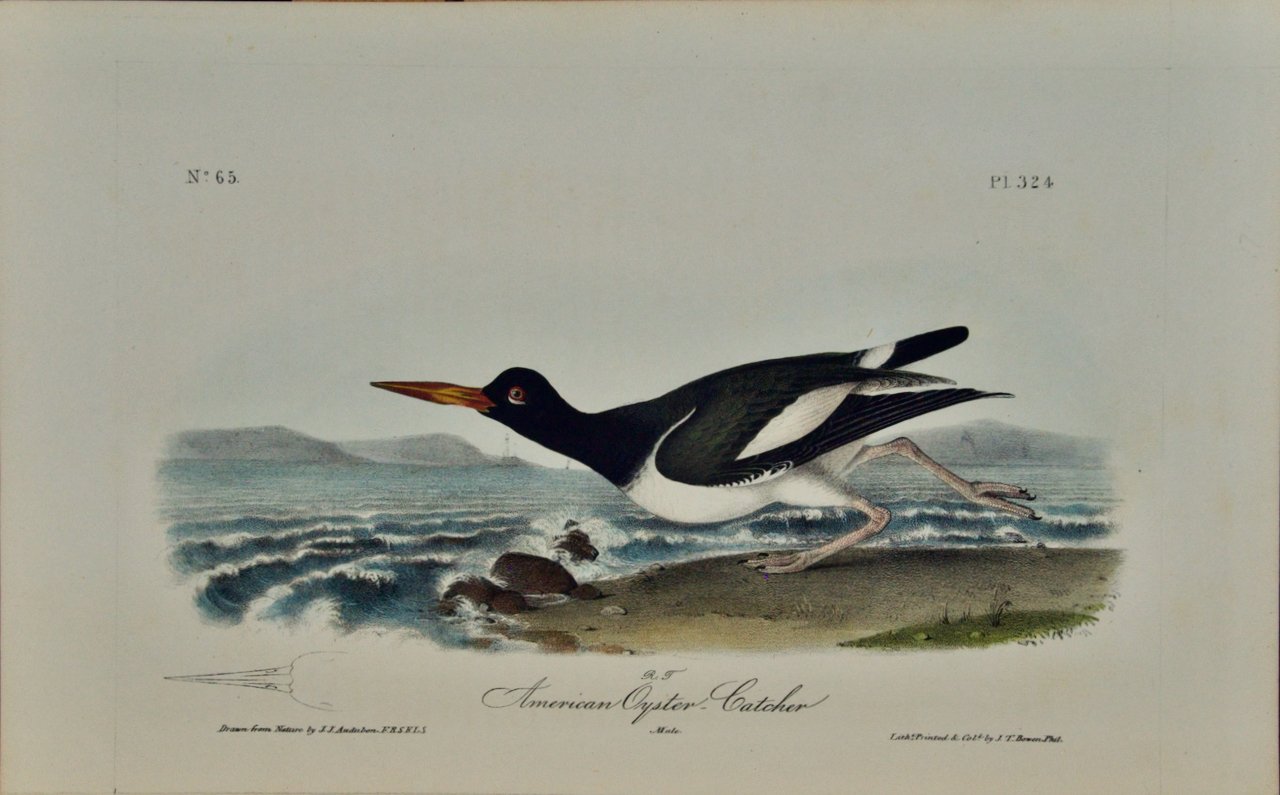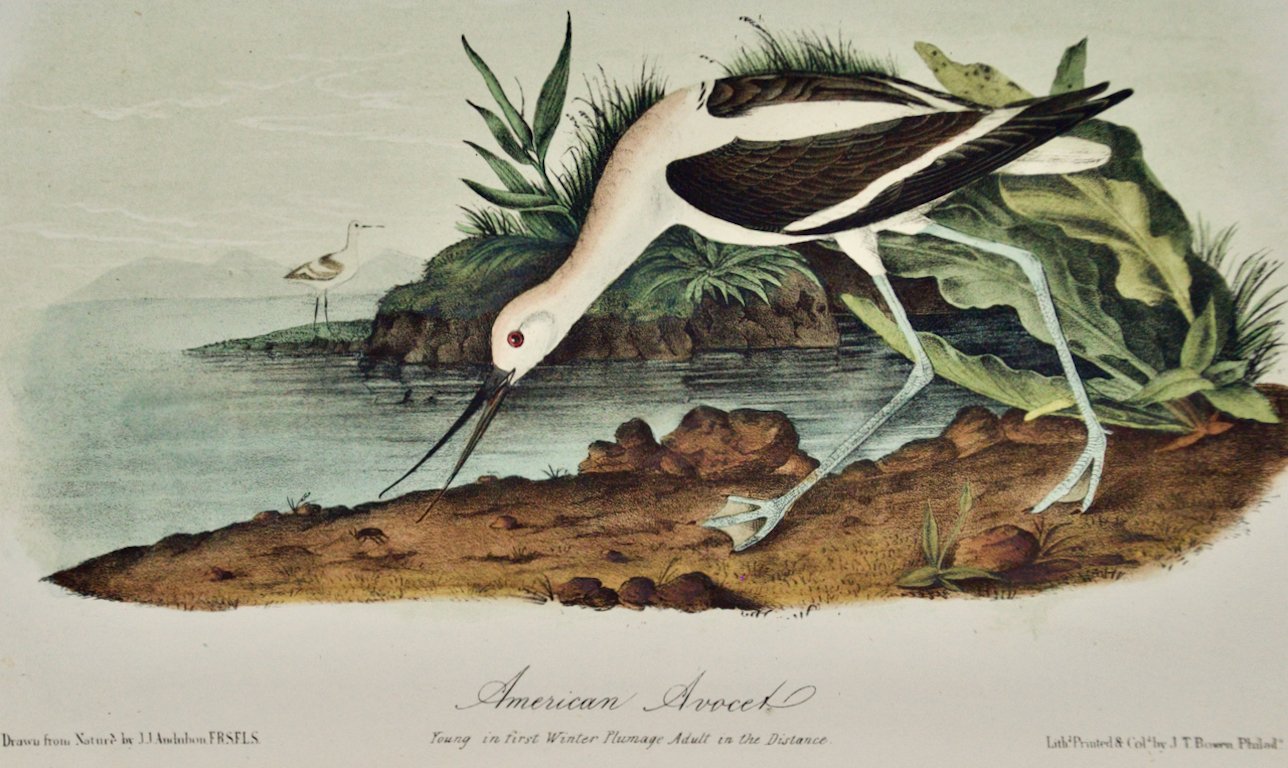Spoonbill "Platalea leucorodia": An 18th Century Hand-colored Nozeman Engraving
This a rare 18th century hand-colored large folio-sized copperplate engraving entitled "Platalea leucorodia" (Spoonbill) by Cornelius Nozeman in volume II of his publication 'Nederlandsche Vogelen', engraved by Christiaan Sepp or his son Jan Christiaan Sepp, published in Amsterdam in 1770. This engraving depicts a Platalea leucorodia Spoonbill, a large bird that lives mainly in Europe, Asia and Africa. It commonly migrates long distances on thermal air currents from the colder Northern European climates to Sub-Saharan Africa in the winter, sometimes as far long as Finland to South Africa. The Asian black stork migrates to the Indian region. There is also a non-migratory black stork living in Southern Africa.
Creator: Cornelis Nozeman and Jan Christiaan Sepp
Creation Year: 1789
Dimensions: Height: 20.25 in (51.44 cm)
Width: 13.75 in (34.93 cm)
Medium: Engraving
Condition: See description below.
This a rare 18th century hand-colored large folio-sized copperplate engraving entitled "Platalea leucorodia" (Spoonbill) by Cornelius Nozeman in volume II of his publication 'Nederlandsche Vogelen', engraved by Christiaan Sepp or his son Jan Christiaan Sepp, published in Amsterdam in 1770. This engraving depicts a Platalea leucorodia Spoonbill, a large bird that lives mainly in Europe, Asia and Africa. It commonly migrates long distances on thermal air currents from the colder Northern European climates to Sub-Saharan Africa in the winter, sometimes as far long as Finland to South Africa. The Asian black stork migrates to the Indian region. There is also a non-migratory black stork living in Southern Africa.
Creator: Cornelis Nozeman and Jan Christiaan Sepp
Creation Year: 1789
Dimensions: Height: 20.25 in (51.44 cm)
Width: 13.75 in (34.93 cm)
Medium: Engraving
Condition: See description below.
This a rare 18th century hand-colored large folio-sized copperplate engraving entitled "Platalea leucorodia" (Spoonbill) by Cornelius Nozeman in volume II of his publication 'Nederlandsche Vogelen', engraved by Christiaan Sepp or his son Jan Christiaan Sepp, published in Amsterdam in 1770. This engraving depicts a Platalea leucorodia Spoonbill, a large bird that lives mainly in Europe, Asia and Africa. It commonly migrates long distances on thermal air currents from the colder Northern European climates to Sub-Saharan Africa in the winter, sometimes as far long as Finland to South Africa. The Asian black stork migrates to the Indian region. There is also a non-migratory black stork living in Southern Africa.
Creator: Cornelis Nozeman and Jan Christiaan Sepp
Creation Year: 1789
Dimensions: Height: 20.25 in (51.44 cm)
Width: 13.75 in (34.93 cm)
Medium: Engraving
Condition: See description below.
This striking and scarce engraving is printed on 18th century watermarked chain-linked laid paper. It has wide margins. The sheet measures 20.25" high x 13.75" wide. There are a few very small faint, barely visible spots in the right margin, but it is otherwise in excellent condition.
'Nederlandsche Vogelen' took nearly 60 years to complete all five volumes. The first two volumes were created by Nozeman and Sepp and after they died by Dr. Martinus Houttuyn & C. J. Temminck worked on subsequent volumes, volume V completed in 1829. The work is very scarce with one of the last complete sets selling for $92,000 at auction.
Cornelius Nozeman (1721-1786) was a Dutch minister and an ornithologist. Nozeman and Christiaan Sepp along with his son Jan Christiaan Sepp collaborated on the creation of the 1st two volumes of this ambitious work, with Nozeman writing the text and the Sepps creating the engravings. Martinus Houttuyn continued the work for the third volume, which was published in 1797. one year before he died. The fourth volume was published anonymously in 1809. The project was completed in 1829 with the publication of a fifth volume by Jan Sepp, the son of Jan Christiaan and grandson of Christiaan Sepp. The project involved three generations of Sepp family artists over the sixty years it took to complete the work. At the time of the final publication it was the costliest book ever published.
































